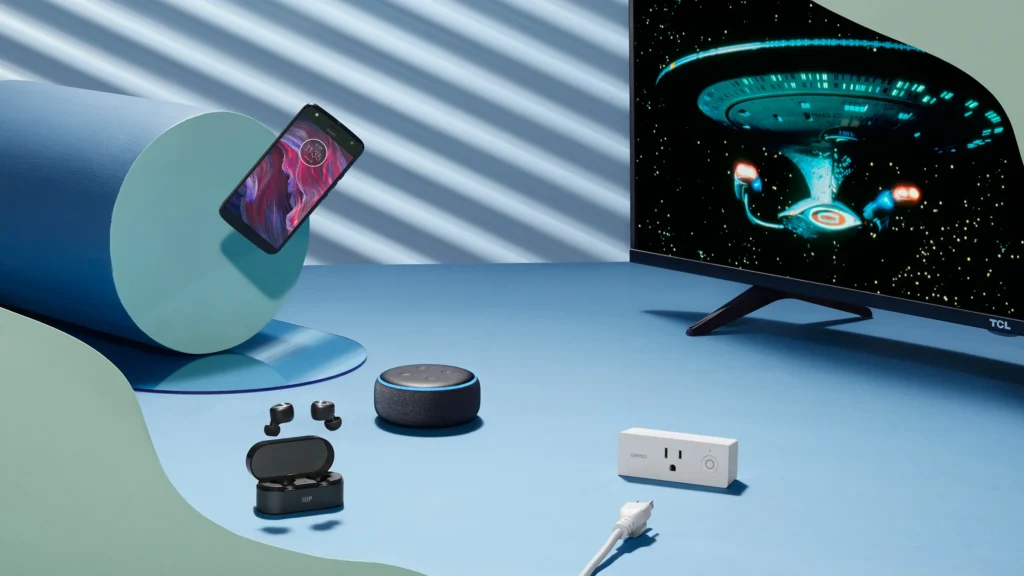Introduction: The Money-Saving Side of Smart Homes
The rise of smart home devices has transformed the way people think about everyday living. What once seemed like futuristic luxuries—automated thermostats, app-controlled lighting, and intelligent appliances—are now practical tools found in millions of households. While many homeowners adopt smart technology for convenience, entertainment, or security, there is an increasingly strong case that these devices can generate significant financial savings over time. From cutting electricity bills and water usage to reducing unnecessary purchases, smart devices offer a direct pathway to cost efficiency. The key is knowing which products provide real value, rather than being just expensive gadgets with limited return. In this article, we will explore smart home devices that actually save you money, breaking down how they work, what to expect in terms of savings, and why they are worth considering as part of a modern household setup.
Smart Thermostats: Heating and Cooling with Precision
One of the most widely recommended investments in the world of smart homes is the smart thermostat. Unlike traditional programmable models, smart thermostats use AI-driven learning, motion sensors, and geolocation data from your smartphone to optimize heating and cooling in real time. This means they automatically adjust when you are home, away, or asleep, ensuring you never waste energy on climate control when it isn’t needed. According to the U.S. Department of Energy, homeowners can save up to 10–12% annually on heating and around 15% on cooling costs by making the switch. While that might not sound dramatic on a monthly bill, it adds up considerably over several years, especially as energy prices continue to rise.
The Bulletproof Benefits of Smart Lighting
When discussing smart home devices that save money, smart lighting systems are often overlooked because people assume their savings are minimal. However, when combined with energy-efficient LED bulbs, smart lighting becomes one of the most cost-effective upgrades available. These systems allow you to schedule lights to turn off automatically, control them remotely, and even adjust brightness levels based on the time of day or occupancy.
- Smart lights use up to 80% less energy than traditional incandescent bulbs.
- Remote control prevents lights from being left on accidentally when you leave home.
- Dimming features allow for customized energy usage and mood lighting.
- Integration with sensors ensures lights turn on only when needed.
- Long-lasting LED bulbs reduce replacement costs compared to old bulbs.
By combining efficiency with automation, a smart lighting system can reduce annual electricity expenses by a noticeable margin while also improving overall convenience.
Smart Plugs and Power Strips: The Hidden Energy-Savers
While smart thermostats and lighting are household names, smart plugs and smart power strips are unsung heroes when it comes to savings. Many electronic devices—from TVs to microwaves—consume power even when they are turned off, a phenomenon known as phantom energy drain. Smart plugs help eliminate this hidden cost by cutting power entirely when devices are not in use. Over time, this small adjustment can lead to measurable savings, particularly for households with multiple entertainment systems, kitchen appliances, and office setups.
- Helps cut down phantom loads from devices like game consoles and chargers.
- Provides detailed usage reports so you can track energy-hungry appliances.
- Allows remote shutdown of plugged-in items when you are away.
- Enables voice control via assistants like Alexa or Google Home.
- Prevents unnecessary wear-and-tear on devices that remain plugged in.
On average, phantom load reduction can save between $100–200 annually, depending on the size of your home and the number of devices in use.
Smart Water Systems: Conserving More Than Just Water
Another category of smart home devices that actually save money involves smart water monitors and leak detectors. These tools track water usage in real time, detect leaks immediately, and even shut off your supply if a major issue is detected. Beyond preventing catastrophic flood damage, which can cost thousands, they help households avoid small but consistent leaks that can inflate water bills. Smart irrigation systems for lawns and gardens also optimize watering schedules based on weather forecasts, preventing overwatering while ensuring healthy landscaping.
Table 1: Average Water Savings with Smart Devices
| Device Type | Average Savings/Year | Additional Benefits |
| Smart Leak Detectors | $200–$1,000 (damage prevention) | Stops mold, reduces repair bills |
| Smart Water Monitors | $50–$150 | Detects hidden leaks, tracks usage trends |
| Smart Irrigation Controllers | $100–$250 | Reduces lawn overwatering and landscaping costs |
Over the long term, smart water systems provide some of the most tangible savings, particularly in regions where water costs are rising.
Smart Appliances: Modern Efficiency Meets Practicality
From refrigerators that notify you when groceries are expiring to washing machines that adjust water cycles based on load weight, smart appliances are designed with energy efficiency in mind. While they come with a higher upfront cost, their long-term efficiency benefits and maintenance reminders help extend appliance lifespan and reduce waste. For example, a smart refrigerator may reduce food waste by keeping better track of expiration dates, while a smart dishwasher optimizes cycles for minimal water and electricity use.
- Smart washing machines reduce water usage by sensing load size.
- Refrigerators with smart alerts minimize food spoilage and reduce grocery costs.
- Dishwashers run during off-peak hours, lowering energy costs.
- Ovens and microwaves with remote monitoring prevent overuse and accidents.
- Appliances provide maintenance alerts, avoiding costly repairs or breakdowns.
When combined with energy-efficient design, these smart appliances can generate hundreds of dollars in savings annually while contributing to a more sustainable household.
Home Security Systems: Protection That Pays Off
Many people view smart security systems as a non-financial purchase, but in reality, they can also save money. Modern systems include cameras, motion detectors, and door sensors that connect to smartphones, allowing for remote monitoring and alerts. Beyond the obvious benefit of theft deterrence, insurance companies often provide discounts to homeowners with security systems, saving anywhere from 5–20% on premiums.
Table 2: Insurance Savings by Security Device
| Security Device | Potential Premium Discount | Additional Value |
| Smart Door Locks | 5–10% | Prevents unauthorized access |
| Smart Cameras | 10–15% | Remote monitoring, evidence collection |
| Full Smart Security Kits | 15–20% | Comprehensive coverage, 24/7 alerts |
Therefore, while the upfront cost of a system may be higher, the combined benefits of security and insurance savings justify the expense.
Energy Monitoring Systems: Data-Driven Savings
Another overlooked tool in the realm of smart home devices that save money is the smart energy monitoring system. These devices connect directly to your home’s electrical panel and provide detailed analytics about energy usage by room or appliance. By identifying which devices consume the most electricity, homeowners can make informed decisions about unplugging, upgrading, or limiting usage. Some systems also pair with solar panels, optimizing renewable energy usage for even greater long-term efficiency.
- Identifies high-energy appliances draining the most power.
- Provides real-time feedback on cost per hour of usage.
- Integrates with utility company smart meters for optimized billing.
- Encourages behavioral changes through consumption tracking.
- Helps plan upgrades by showing ROI on new appliances
With access to such detailed analytics, households gain the knowledge necessary to make strategic decisions that can save hundreds annually.
Conclusion: Investing in Smart Savings
When evaluating smart home devices that actually save you money, the key takeaway is that not all devices are created equal. Some provide immediate returns by cutting phantom energy or reducing water bills, while others require a longer-term perspective, such as smart appliances or full energy monitoring systems. Regardless, the consistent theme is that with thoughtful selection and integration, a smart home can evolve from being a luxury-driven environment into a cost-saving powerhouse. For families and individuals concerned about rising utility bills, adopting the right devices is not just about comfort or convenience—it is about achieving lasting financial efficiency.
FAQs About Smart Home Devices That Save You Money
1. Do smart thermostats really save money?
Yes, smart thermostats can reduce heating and cooling costs by 10–15% annually by learning your schedule and optimizing temperature settings.
2. Are smart lights worth the cost?
Smart lights paired with LED bulbs can cut lighting costs significantly, often paying for themselves within a year or two.
3. How do smart plugs save money?
They eliminate phantom energy drain by shutting off devices completely when not in use, saving $100–200 annually.
4. Can smart appliances reduce grocery waste?
Yes, smart refrigerators can notify you of expiring items, helping reduce unnecessary food purchases.
5. Do security systems lower insurance premiums?
Most insurance companies provide 5–20% discounts for homes equipped with smart security systems.
6. How much can a smart water system save?
Depending on leaks and water usage, smart water monitors and irrigation systems can save $100–500 annually.
7. Are energy monitoring systems necessary?
While not essential, they provide valuable data to optimize household energy usage and identify major cost drivers.
8. Do these devices require Wi-Fi to function?
Most smart devices rely on Wi-Fi or Bluetooth connectivity for remote control and monitoring.
9. Are smart devices expensive to maintain?
Generally, no. Most updates are software-based, and hardware maintenance is minimal compared to savings.
10. Which device should I buy first?
A smart thermostat or smart plugs offer the fastest return on investment for most households.


